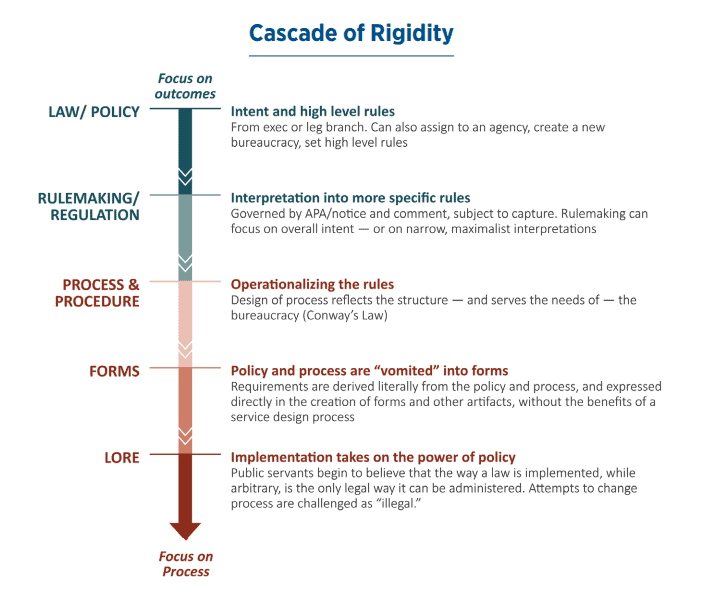From “The how we need now: A capacity agenda for 2025 and beyond,” published by the Niskanen Center think tank.
What are the forces making the government so slow? The first of those dysfunctions is what Nicholas Bagley of the University of Michigan calls the “procedure fetish,” and we dub the bureaucratic anxiety cycle. Anxiety about legitimacy and accountability drives critics to demand, and bureaucrats to seek refuge behind, more and more layers of procedure that show things have been done “by the book.” But all that procedure further erodes both legitimacy and accountability by overburdening the bureaucracy, reducing its ability to deliver meaningful outcomes.
In the addition to the government, tell me this doesn’t summarize every large company you’ve ever dealt with, especially any that deal in a high-regulation industry like healthcare.
They go on to flesh out the “Cascade of Rigidity” with a helpful infographic:

Well-intentioned laws and regulations become increasingly inflexible and counterproductive as they evolve toward implementation. The authors argue part of the solution is shifting focus:
The revised system must shift its emphasis from compliance to meeting mission needs. This means power to make decisions must shift from compliance personnel to the people closest to the work.
The vicious cycle of growing bureaucracy and procedural bloat requires a reversion to our ultimate goals: a need to serve the mission and not its own machinery.
“This means power to make decisions must shift from compliance personnel to the people closest to the work.”
No easy feat.
2 Comments